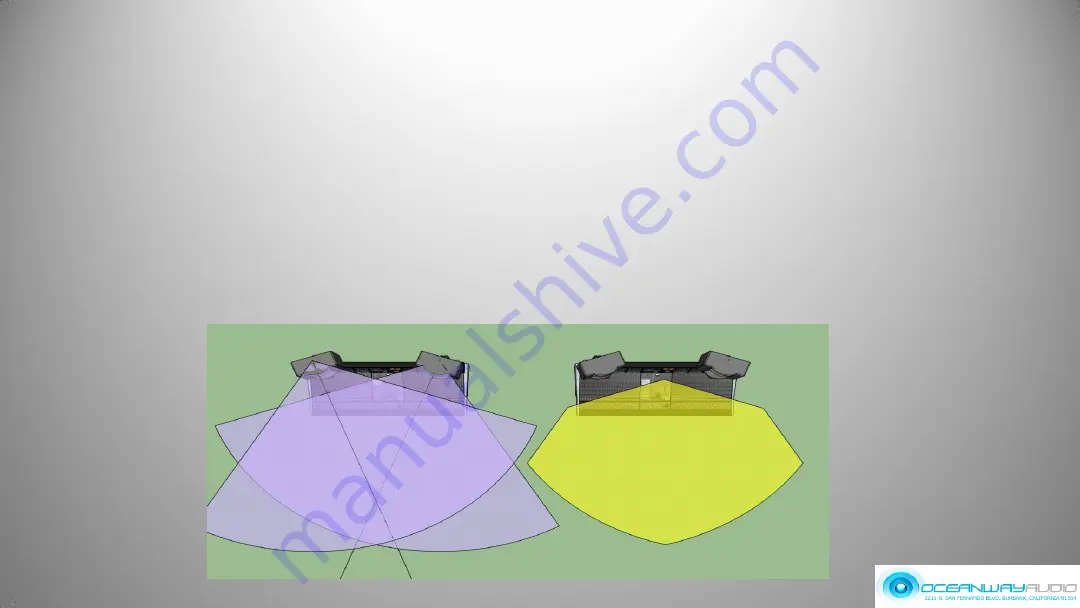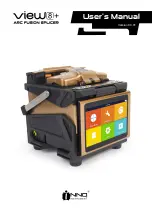
Achieving wideband stereo sound is deceptively simple;
you must be able to hear the full range of two speaker
s. The HR4
represents a breakthrough in modern stereo studio monitor technology. It employs advanced, full-spectrum directivity-
control as compared to the typical compact direct-
radiator monitor which exhibits narrow HF “beaming”. While most
compact monitors establish a “sweet spot” between them, the HR4 establishes a wide-area Stereo-Zone™ in a wide area.
The HR4 can easily be aimed to establish a truly accurate Stereo-
Zone™ for multi-person listening. For example, we have
plotted, below, the 100 degree horizontal pattern of the HR4 in an overhead plan-view with a typical console. Speaker
centers are about 72” apart. You can see where the individual HR4 sound-fields overlap; this defines a wide area where you
can hear full-band stereophonic sound. In this case, we chose an inward aiming of 20 degrees. If the pair were aimed more
inward, the stereo-zone narrows. Aiming more outward, the Stereo-
Zone™ widens but the result is more sound impacting
the sides of the studio environment, changing the overall sound of the space. It is up to the HR4 owner or studio designer to
choose what works best. Often this is a matter of listening and achieving the most acceptable aesthetic sound (always our
first recommendation). A 20 degree inward aiming angle is a good place to start, nice wide field at the console and also for
anyone behind or off to the sides (two or three persons can work at once on a mix and hear the full stereo sound): Below is a
graphical depiction showing (below right) the location of the stereo zone in yellow, which is simply the mutual overlap zone
of the two HR4’s.











































